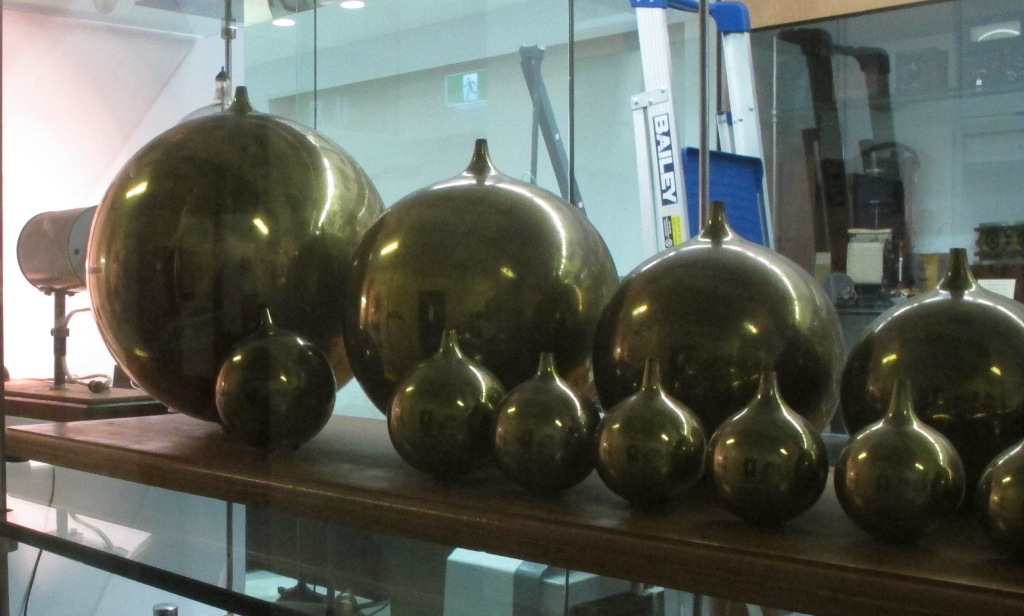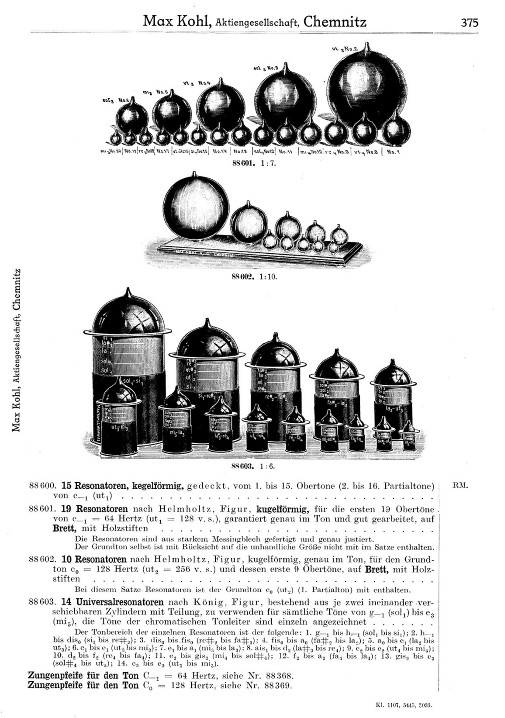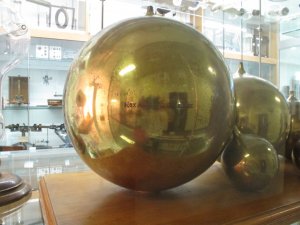
Invented by Hermann von Helmholtz (1821-1894), the Helmholtz resonator was used to test the presence of a particular harmonic within a musical note. If the harmonic associated with the resonant frequency of the Helmholtz resonator was present within the note, the resonator suppressed all other frequencies and sung its resonant frequency to the listener.
A Helmholtz resonator is typically a sperical cavity made of thin brass, with a wide mouth and thin neck along its diameter. Sound waves enter through the wide opening and compress the air within the cavity. Since the air inside the cavity is now at a higher pressure than the equilibrium air pressure, the air rushes back outwards, leaving a lower pressure inside the resonator. This behaviour of oscillating high then low pressure continues at a particular frequency, depending upon the size and shape of the resonator. This is the resonant frequency of the Helmholtz resonator.
To use, soft wax is place around the thin neck of the resonator, and this nipple is inserted into the ear. The soft wax creates a good seal for the resonator and the ear. When a tone is played, the resonator sings if its frequency is a component of the note. Helmholtz resonators have a single low, isolated resonant frequency, whereas strings, tubes and other more complex oscillating systems have multiple closely-spaced resonant frequencies. This makes it possible for a Helmholtz resonator, when excited by white noise, to output only a narrow band of frequencies about its resonant frequency. Helmholtz utilised this by applying the same note to smaller and smaller resonators to approximate the Fourier spectrum of the note.
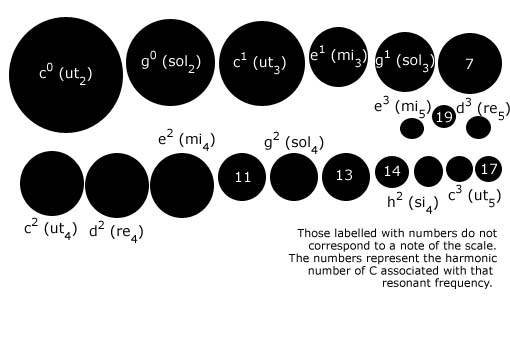
Figure 1: Layout of the Helmholtz Resonators upon their stand, and details of their associated markings.
The set consists of resonators representing the first 19 overtones of C, laid out upon a stand as shown in Figure 1. Each resonator is labelled with its corresponding note on the scale, and its sol-fa equivalent. It must be noted that the set of resonators includes a ‘si’, thus these instruments were most likely constructed outside of the UK and it’s commonwealth. This can be inferred from the reference to the seventh note in the original hexachord ‘sol-fa’ structure as being ‘si’. The alternative ‘te’ was popularised by church teachings in mid 19th century England. The set also bears the mark of ‘h’ instead of ‘c’ for its fundamental, implying Germanic origins. However, the set does not bear the mark of the most famous acoustical instrument maker of the time, K.R. Koenig, or the mark of Max Kohl. It was most likely purchased between the years of 1911 and 1914, the former being the opening of the university, and the latter being due to the first World War. It was noted at the time of Koenig, that many inferior instruments were created with his mark, much to his dismay. Figure 2 is an excerpt from his catalogue of 1889, where a set of 19 Helmholtz resonators cost 170 francs.
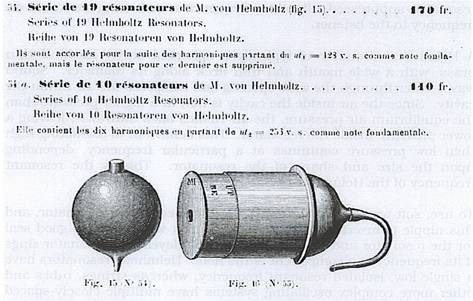
Figure 2: From Koenig catalogue of Paris, 1889 ii. This catalogue is written in 3 languages and indicates a set of 19 Helmholtz resonators cost 170 francs, where Fig 15 is an illustration of the resonators.
A.L. T.


